Prices
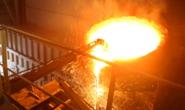
May 11, 2022
US Raw Steel Production: 3MMA Slips to 13-Month Low in March
Written by Brett Linton
US raw steel production increased to 7.57 million net tons in March, up 8% from February’s 12-month low, according to recently released American Iron and Steel Institute (AISI) data.
While up month over month, March holds the second lowest monthly production rate of the past 13 months. Recall that last August production reached a 20-month high of 8.29 million tons. March production was down 257,000 tons, or 3%, compared to the same month last year.
Note that AISI’s monthly production estimates are different than the weekly estimates SMU reports each Tuesday. The monthly estimates are based on over 75% of domestic mills reporting versus only 50% reporting weekly estimates.
Figure 1 compares monthly production data on a three-month moving average (3MMA) basis to smooth out month-to-month fluctuations. Raw steel production averaged 7.43 million tons between January and March 2022, the lowest three-month average since February 2021. The average production rate for Q1 2022 is down 6% versus the previous quarter, down 9% versus Q3 2021, and down 1% from Q1 2021. Recall that Q2 2020 production plunged to the lowest 3MMA level in our 12-year history at 5.39 million tons.
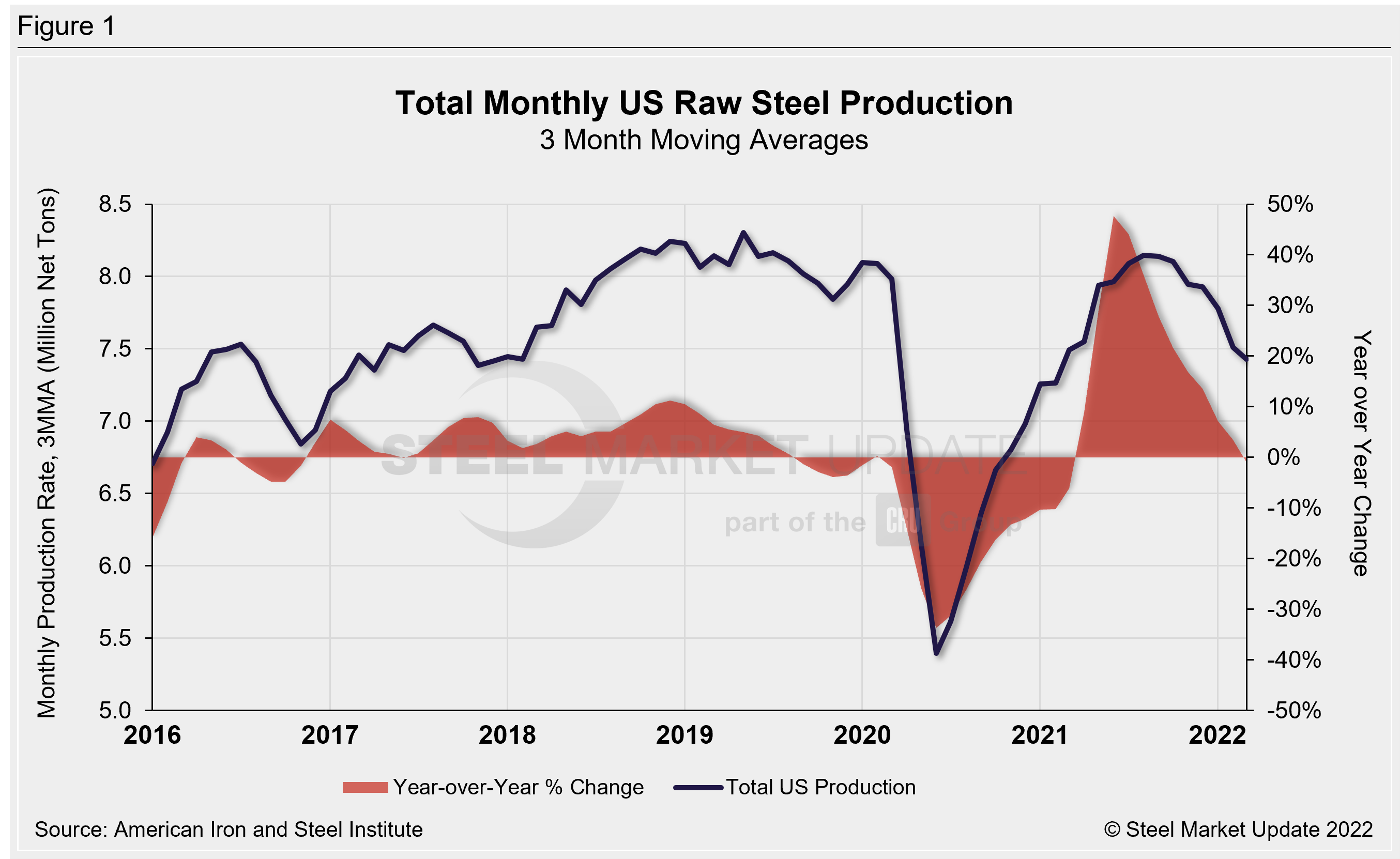
SMU is now publishing regional steel production data for the four regions responsible for 10% or more of total domestic production. Figure 2 shows 3MMA production history from the combined states of Virginia, West Virginia, Georgia, Florida, North Carolina, South Carolina and Louisiana. The latest 3MMA for March is 847,000 tons, the lowest level since May 2021, but up 8% compared to the same period in 2021.
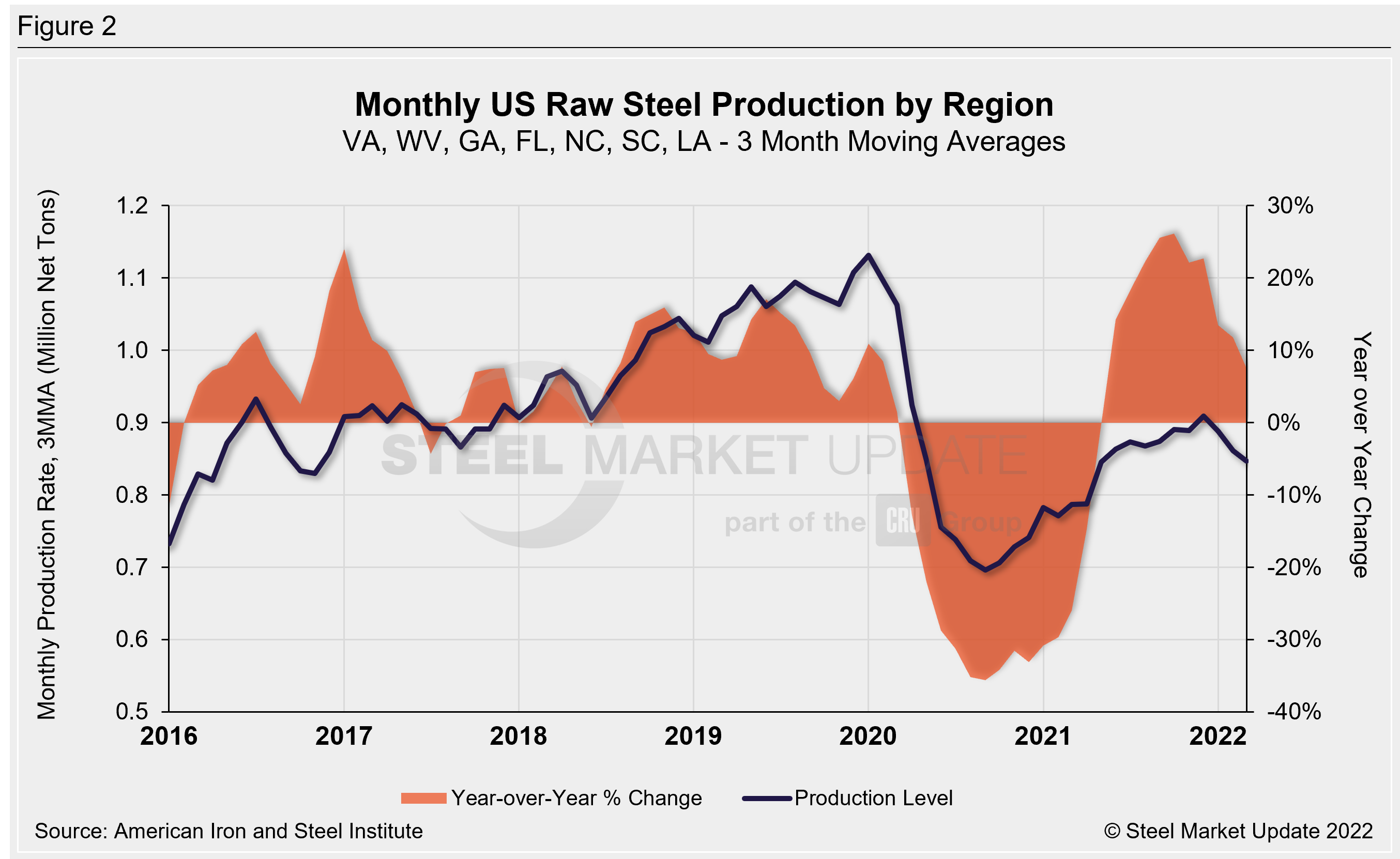
Figure 3 shows the combined production in Alabama, Tennessee, Mississippi, Arkansas, and Kentucky. The March 3MMA is 1.94 million tons, down 1% year-over-year. Recall that September 2021 saw the highest 3MMA level in SMU’s recorded history at 2.15 million tons.
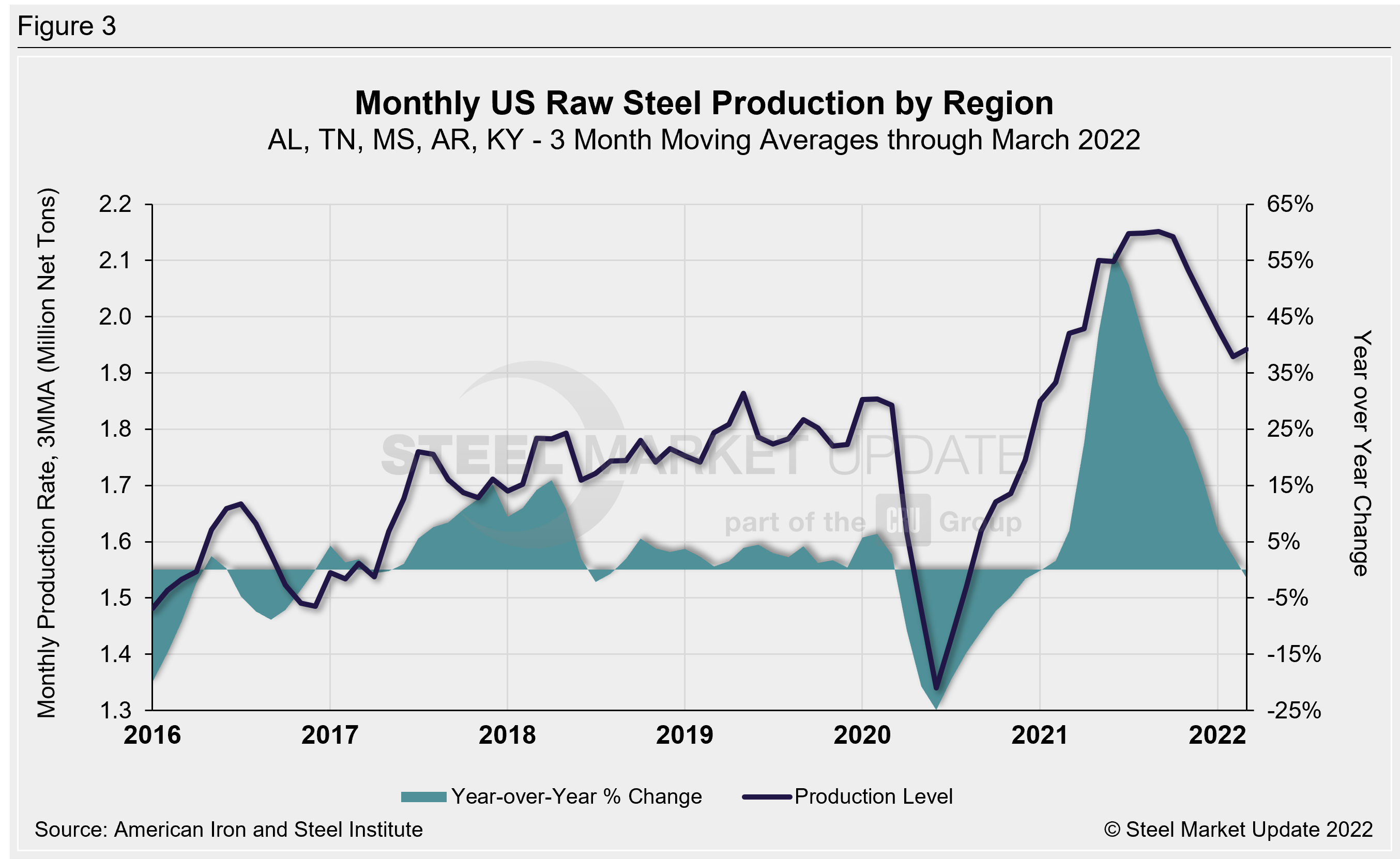
Figure 4 displays 3MMA production from Ohio, currently at 927,000 tons through March and up 6% over the same period in 2021. This is the lowest 3MMA since April 2021.
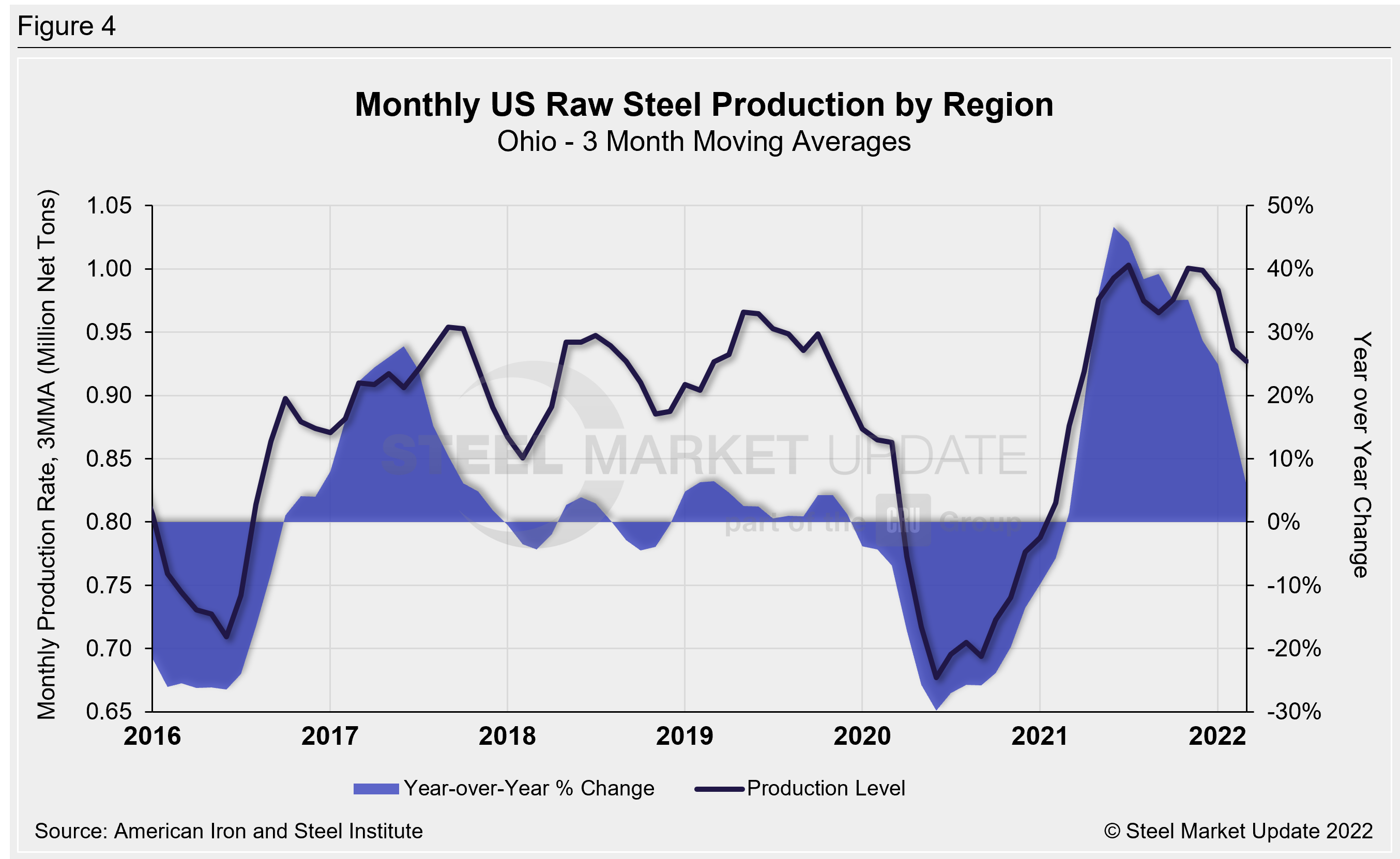
Figure 5 shows the 3MMA production levels from the state of Indiana through March. Production is now at 1.73 million tons, down 14% compared to one year ago. This is now the lowest 3MMA since August 2020.
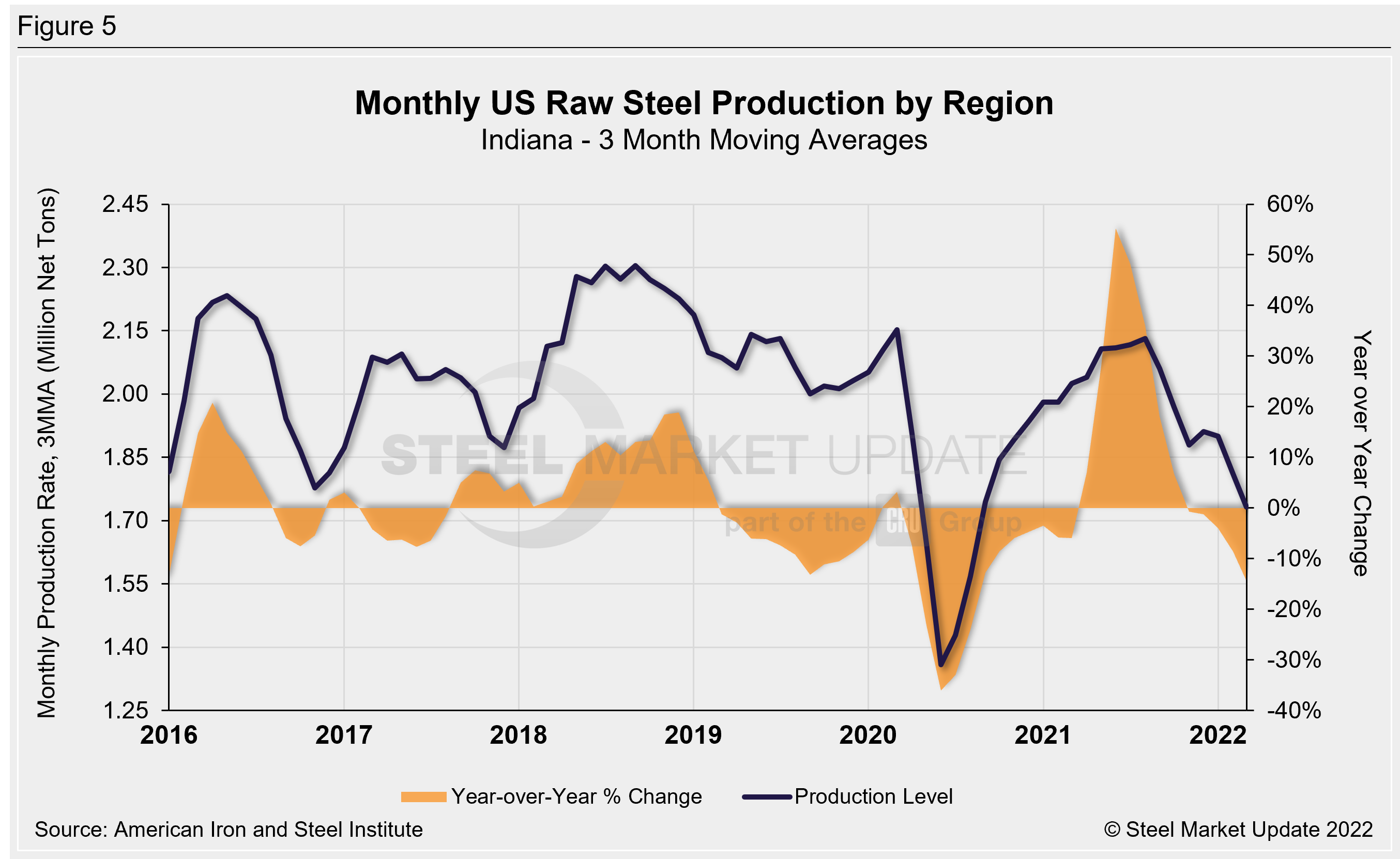
The average mill capacity utilization rate for March was 78.7%, down from 80.8% in February but up from 78.0% one year ago. The average capacity utilization rate for the year is now 79.7%, up from 77.1% in the first three months of 2021.
On a 3MMA basis, the capacity utilization rate through March slipped to an 11-month low of 79.8%, up 3% compared to the same period one year prior. As shown in Figure 6, the 3MMA utilization rate had increased each month from the June 2020 low through September 2021. It has eased each month since.
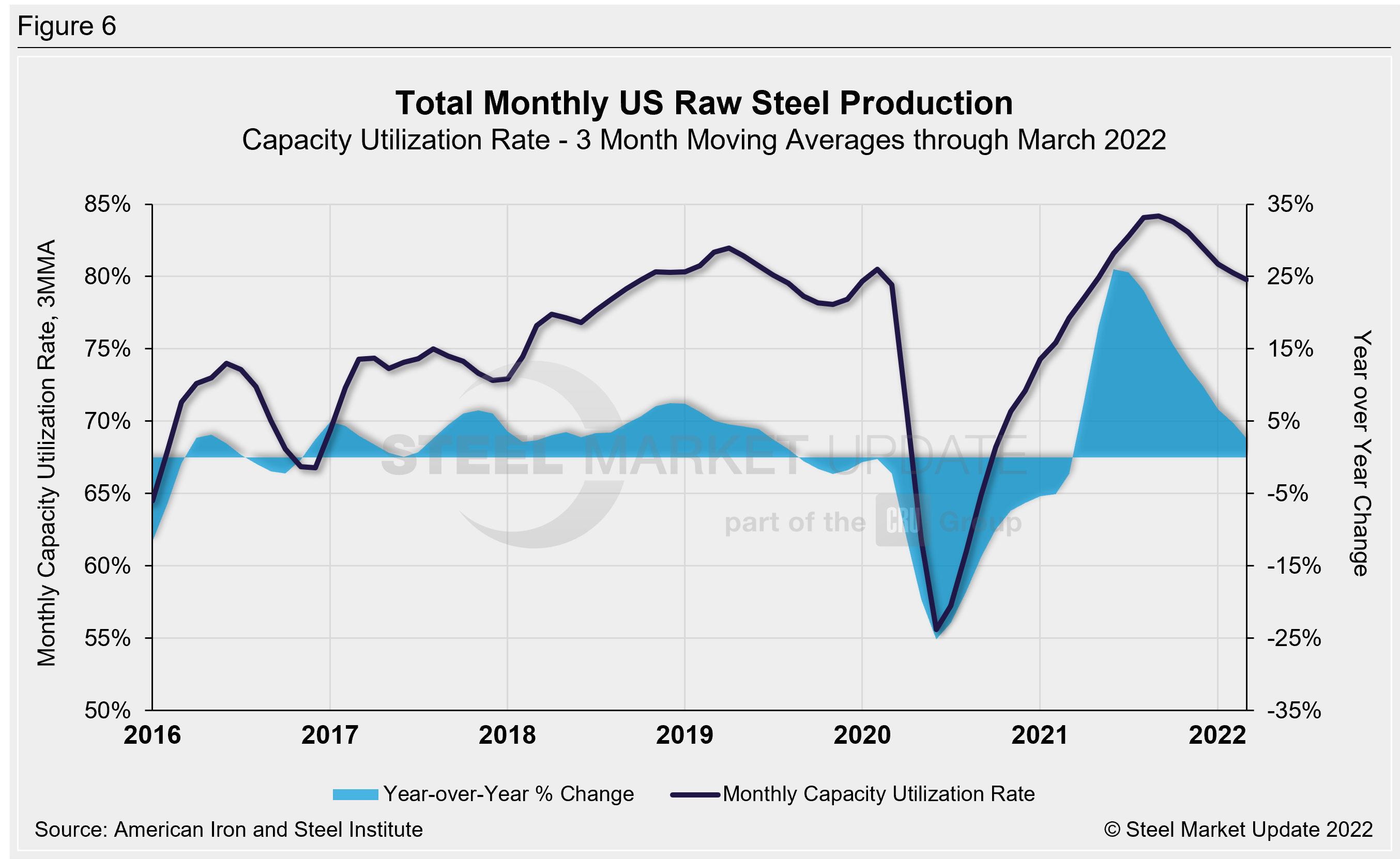
SMU Note: Additional raw steel production graphics are available in the Analysis section of our website here. If you need assistance logging into or navigating the website, contact us at info@SteelMarketUpdate.com.
By Brett Linton, Brett@SteelMarketUpdate.com







